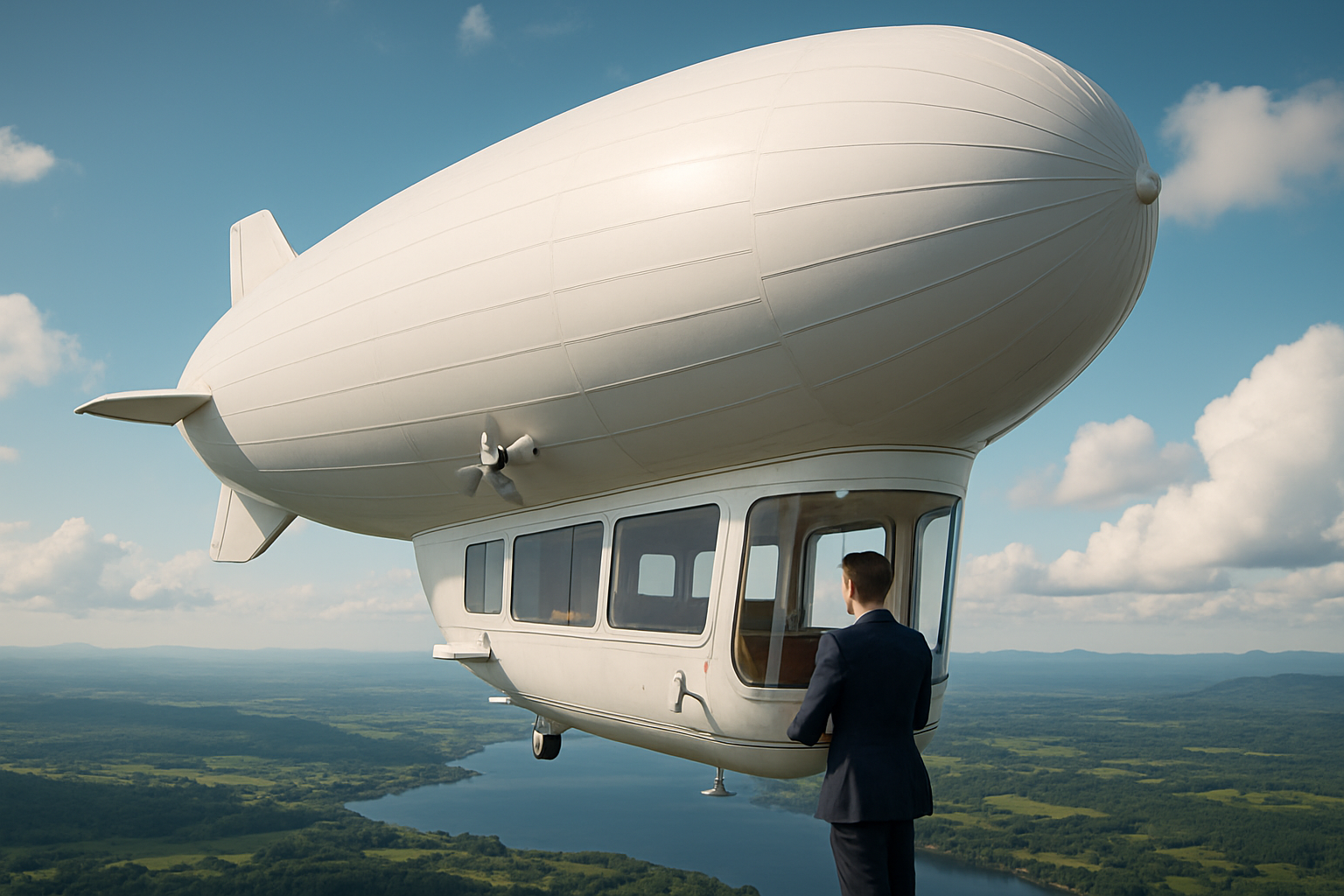Exploring the Resurgence of Zeppelin Tourism
Soaring gracefully through the skies, airships are making an unexpected comeback in the world of travel. This revival of zeppelin tourism offers a unique blend of luxury, sustainability, and nostalgia. As travelers seek novel experiences and eco-friendly alternatives, these gentle giants of the air are capturing imaginations once again. From panoramic views to leisurely journeys, zeppelin travel promises a fresh perspective on aerial adventures, challenging our notions of modern transportation.

However, the era of airship travel came to an abrupt end with the Hindenburg disaster in 1937. This tragic event, combined with advancements in airplane technology, led to the decline of zeppelin tourism. For decades, airships were relegated to advertising and occasional sightseeing flights, their potential as a viable mode of transportation largely forgotten.
The Modern Zeppelin Renaissance
In recent years, there has been a renewed interest in airship technology, driven by advancements in materials science, propulsion systems, and a growing demand for sustainable travel options. Modern zeppelins, such as those produced by Zeppelin NT, utilize cutting-edge technology to ensure safety and efficiency while maintaining the romance of lighter-than-air travel.
These new-generation airships are filled with non-flammable helium, addressing the safety concerns that plagued their predecessors. They also incorporate sophisticated fly-by-wire controls and weather radar systems, allowing for precise navigation and improved flight stability. With these technological advancements, zeppelin tourism is poised to carve out a niche in the luxury travel market.
The Unique Appeal of Zeppelin Travel
Zeppelin tourism offers a travel experience unlike any other. Flying at altitudes of around 1,000 feet, passengers enjoy breathtaking views of landscapes that are often missed by conventional air travel. The slow pace of the journey – typically around 70 mph – allows for a more immersive and relaxed experience, perfect for sightseeing and photography.
The spacious cabins of modern zeppelins provide a level of comfort reminiscent of cruise ships. Large panoramic windows offer unobstructed views, while the near-silent operation creates a serene atmosphere. This combination of comfort and spectacle makes zeppelin travel particularly appealing for special occasions, romantic getaways, and luxury expeditions.
Sustainable Sky Tourism
One of the most compelling aspects of the zeppelin revival is its potential as a more environmentally friendly mode of air travel. Modern airships are significantly more fuel-efficient than traditional aircraft, producing a fraction of the carbon emissions per passenger. This aligns well with the growing trend of eco-conscious travel and could position zeppelins as a sustainable alternative for certain routes and experiences.
Moreover, zeppelins can access remote areas with minimal infrastructure, opening up possibilities for low-impact tourism in ecologically sensitive regions. This capability could revolutionize wildlife viewing, scientific expeditions, and adventure travel, allowing access to previously hard-to-reach destinations without the need for extensive ground infrastructure.
Challenges and Future Prospects
Despite the exciting possibilities, the resurgence of zeppelin tourism faces several challenges. The limited number of operational airships and the specialized infrastructure required for their operation currently restrict the scope of zeppelin travel. Additionally, weather sensitivity and slower speeds compared to conventional aircraft may limit their appeal for certain types of travelers.
However, ongoing research and development in airship technology promise to address many of these limitations. Innovations in hybrid propulsion systems and advanced materials could lead to faster, more weather-resistant airships capable of longer journeys. As the industry grows, we may see the emergence of dedicated zeppelin ports and an expansion of routes and services.
Airship Insights for the Modern Traveler
-
Zeppelin flights typically last between 30 minutes to several hours, depending on the route and purpose.
-
Modern airships can accommodate up to 14 passengers, offering an intimate travel experience.
-
Unlike hot air balloons, zeppelins can be steered and maintain a specific course, allowing for more structured itineraries.
-
Some companies are developing larger airships capable of trans-oceanic flights, potentially reviving long-distance airship travel.
-
Zeppelin tours are currently available in select locations, including Germany, the United States, and parts of Asia.
As we look to the future of travel, the revival of zeppelin tourism represents a fascinating blend of historical nostalgia and cutting-edge innovation. It offers a unique way to experience the world from above, combining the romance of early aviation with modern comfort and sustainability. While still in its early stages, the resurgence of airship travel has the potential to reshape niche segments of the tourism industry, providing travelers with unforgettable experiences and a new perspective on aerial exploration.





